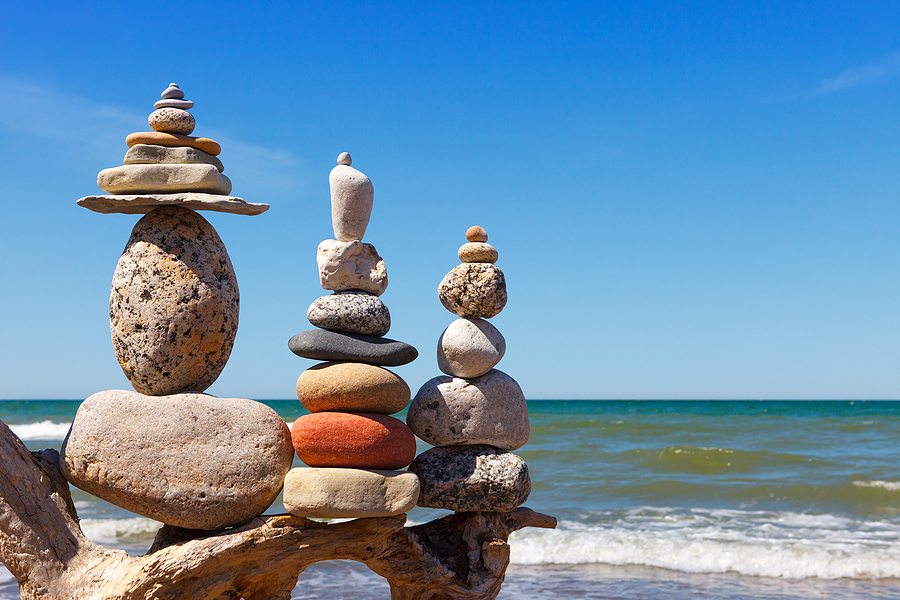
This article is adapted from the Dharma Ocean online course, “Awakening the Body,” with Dr. Reggie Ray.
What is the nature of genuine spirituality, and how can it be practiced in the modern world? As the world falls apart all around us more and more, we are personally touched by events—it’s affecting our relationships and families, our economic life and survival, everything. If we are older, we are probably struggling and afraid. If we’re younger, we’re probably struggling and afraid. It’s touching our psychological lives. As we look at us, we realize this collapse is happening worldwide, and more of us are suffering from psychological and emotional problems. We see dysfunctional families, societies, and social relationships. It’s a dire situation, and everyone feels it. As that happens, there’s something else very positive emerging—a deep and urgent thirst and hunger for genuine spirituality, for finding the fullest depth of meaning in our lives.
Until recently, spirituality has not been an urgent concern because ordinary, conventional life seemed workable for most people. And most people put their stock in what they thought they could accomplish, the security they thought they could have, and the personal fulfillment they thought they could achieve. But in the last 20 years, and more so the last ten years, and even more so the last five years, I’ve noticed in my teaching that most people don’t have confidence in conventional life, or a conviction that conventional, ordinary life, according to the prevailing values of the culture, is going to bring them fulfillment on a deep and lasting level.
More and more, people are asking, “what is genuine spirituality?” Something in them is thirsting and yearning for a depth that is not dependent on the daily cultural weather, the ups and downs of the economy, and the craziness that we face all the time. What is genuine spirituality, and how can we pursue that longing that is in us? When we ask ourselves that question in this culture, we are truly roaming in a wasteland. And by “culture,” I mean modern society—I’m not talking about America or England or China. I’m talking about the global culture we call “modernism” that is consuming and so rapidly replacing traditional cultures.
In terms of the spiritual question, modern society is a wasteland because so many of us are running around looking for something that will satisfy our deepest human needs. Spirituality has become a consumer item—it’s for sale, and it is being promoted everywhere on the planet. Much if not nearly all of the spirituality we run into in the marketplace is bogus spirituality. It’s like roaming around in a desert and finding water, but it’s brackish, or you eat some berries, but they’re poisonous. A lot of what goes by the name of spirituality today actually poisons people, confusing them further, giving them false hope, and feeding them things that actually don’t address the basic problem.
So within this vast wasteland, it’s important for us to ask, “what is genuine spirituality?” The answer I want to suggest is a very old one going back to the indigenous cultures and is also found in some of the literate cultures of Asia and the West. And that is that spirituality is fundamentally different from organized religion. It’s different from the institutions and the rules and regulations and the ways of dressing and the ways of eating that all religions have. Genuine spirituality is the thirst to deeply and fully understand the life that we have and the person that we are and the experience that makes up our existence on a day-to-day basis.
Many share a deep intuition that in this world and in daily life, there is a depth that we can’t quite touch; we can’t quite reach. We have the intuition that somehow the answers are right here yet somehow we can’t get to them and so we are left feeling cut off. We feel separated, yet we know there’s something right here, but how do we get to it? How do we uncover it? How do we lay it bare? How do we live it? Within the Buddhist traditions, there are two kinds of ways in which you can approach spirituality.
One way is through organized religion, such as Buddhism, with the monks and rituals and the institutions and texts and the study. And it’s valid, at least up to a point—it’s always been respected, but it’s not the most direct route. The most direct route, and we’re still talking about Buddhism, is that we engage in a practice that leads us deeply to the heart of our own human experience, enabling us to peel away the camouflage and masquerade that overlays it, leading us to pull away from and drop the wishful thinking that perhaps makes up much of our spiritual lives, and bringing us to a state of mind that is naked, empty, open, and clear; utterly receptive to this moment of life.
This is the journey of what we call Tantra—the inner esoteric tradition of Vajrayana Buddhism, where we take the direct experience of our body and its simple, unadorned experience of life, as the pathway of discovery to what is deepest and most real in ourselves and our human existence. These practices have been used for millennia; maybe longer. They uncover, or lay bare, the eternal part of us; the part that is beyond time and change. That part, far from being disembodied and disconnected, is actually found at the very core of the person that we are at this exact moment.
When we arrive at the experience of our basic nature, what’s called our “natural state,” then the world appears in a transfigured form. We experience the world as a timeless moment in totality, and our perceptual capacities, our emotional capacities, our ability to experience this moment, becomes truly infinite. To paraphrase William Blake, when you experience your life in a completely naked and open way, you’re touching the infinite—you’re living in the sunrise of eternity. This is the quest for genuine spirituality.
About Dharma Ocean
Dharma Ocean is a non-profit global educational foundation that focuses on somatic meditation as the way to help students – of any secular or religious discipline, by teaching them the importance of embodiment in both meditation and their daily lives as taught in the “practicing lineage” of Chögyam Trungpa Rinpoche. The foundation was established in 2005 by scholar, author, and teacher Dr. Reggie Ray, and is located in the Sangre de Cristo Mountains in Southern Colorado.
John Davis is a seasoned health journalist with expertise in public health and medical research. Holding a degree in health sciences, John excels in making complex health topics understandable and engaging for his readers. His articles, featured in top health publications, cover everything from cutting-edge treatments to public health policies. Outside of journalism, John is an advocate for health education and frequently speaks at community events.





